
Dejima or Deshima, in the 17th century also called Tsukishima, was an artificial island off Nagasaki, Japan that served as a trading post for the Portuguese (1570–1639) and subsequently the Dutch (1641–1854). For 220 years, it was the central conduit for foreign trade and cultural exchange with Japan during the isolationist Edo period (1600–1869), and the only Japanese territory open to Westerners.
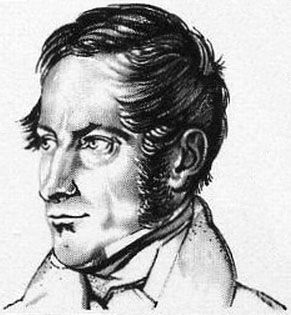
Philipp Franz Balthasar von Siebold was a German physician, botanist and traveller. He achieved prominence by his studies of Japanese flora and fauna and the introduction of Western medicine in Japan. He was the father of the first female Japanese doctor educated in Western medicine, Kusumoto Ine.

Leiden University is a public research university in Leiden, Netherlands. It was founded as a Protestant university in 1575 by William, Prince of Orange, making it the oldest institution of higher education in the Netherlands.

Carl Peter Thunberg, also known as Karl Peter von Thunberg, Carl Pehr Thunberg, or Carl Per Thunberg, was a Swedish naturalist and an "apostle" of Carl Linnaeus. After studying under Linnaeus at Uppsala University, he spent seven years travelling in southern Italy and Asia, collecting and describing people and animals new to European science, and observing local cultures. He has been called "the father of South African botany", "pioneer of Occidental Medicine in Japan", and the "Japanese Linnaeus".
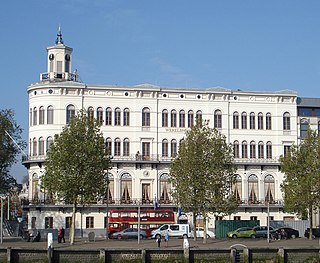
The Wereldmuseum Rotterdam is an ethnographic museum, situated at Willemskade in Rotterdam, the Netherlands.

Hendrik Doeff was the Dutch commissioner in the Dejima trading post in Nagasaki, Japan, during the first years of the 19th century.

Jan Cock Blomhoff was director ("opperhoofd") of Dejima, the Dutch trading colony in the harbour of Nagasaki, Japan, 1817–1824, succeeding Hendrik Doeff.

The Wereldmuseum Amsterdam is an ethnographic museum located in Amsterdam, Netherlands, founded in 1864.

Isaac Titsingh FRS was a Dutch diplomat, historian, Japanologist, and merchant. During a long career in East Asia, Titsingh was a senior official of the Dutch East India Company. He represented the European trading company in exclusive official contact with Tokugawa Japan, traveling to Edo twice for audiences with the shogun and other high bakufu officials. He was the Dutch and VOC governor general in Chinsura, Bengal.

Heinrich Bürger was a German physicist, biologist and botanist employed by the Dutch government, and an entrepreneur. He was important for the study of Japanese fauna and flora.

VOC opperhoofden in Japan were the chief traders of the Dutch East India Company in Japan during the period of the Tokugawa shogunate, also known as the Edo period.

Titia Bergsma was a Dutch woman who visited Dejima Island, Japan, in August 1817 with her husband, Jan Cock Blomhoff.
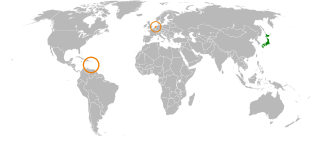
Japan–Netherlands relations are the bilateral relations between Japan and the Netherlands. Relations between Japan and the Netherlands date back to 1609, when the first formal trade relations were established.

Kusumoto Ine was a Japanese physician. She was the first female doctor of Western medicine in Japan.
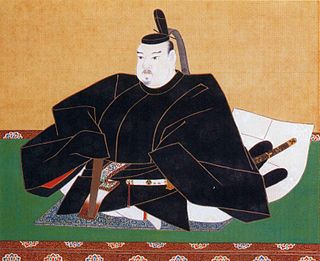
Willem Verstegen was a merchant in service of the Dutch East India Company and chief trader of factory in Dejima.
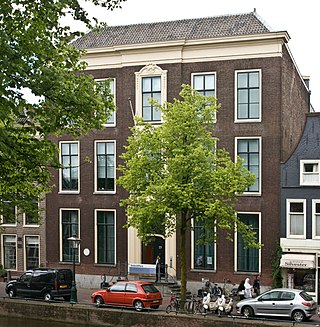
Japan Museum SieboldHuis is a museum located at the Rapenburg (Leiden) in Leiden, Netherlands. It displays items that were collected by Philipp Franz von Siebold (1796-1866) between 1823 and 1829 during his stay at Dejima, the Dutch trade colony nearby Nagasaki in Japan. It also functions as a museum of Japanese culture.

Kawahara Keiga was a late Edo period Japanese painter of plants, fishes, birds, reptiles, crustaceans, social scenes, landscapes and portraits at the Dutch Factory of Dejima, and at Edo, Kyoto and Nagasaki. His works can be found in museums in Japan and in the Netherlands, among others.

The Dutch: Nationaal Museum van Wereldculturen (NMVW) is an overarching museum organisation for the management of several ethnographic museums in the Netherlands, founded in 2014. It consists of the Tropenmuseum in Amsterdam, the Afrika Museum in Berg en Dal, and the Museum Volkenkunde in Leiden. The National Museum of World Cultures works in close cooperation with the Wereldmuseum in Rotterdam. It is also part of nation-wide Dutch organisations for research into provenance studies and projects of restitution of cultural heritage to countries of origin, like the former Dutch colony in today's Indonesia.

Sjoerd Hofstra was a Dutch sociologist and anthropologist, best known as the first Dutch person to conduct ethnographic fieldwork in Africa, where he lived among the Mende in Sierra Leone. Hofstra was an animal welfare advocate.






























